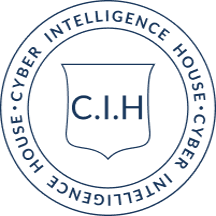I started asking people a simple question to get them thinking beyond their immediate work concerns: would you trust an AI to look after your children? Then I followed up: what about trusting an AI judge to handle your court case?
The responses revealed something unexpected. Almost everyone rejected the AI nanny idea instantly, but many paused when considering AI judges. Cybersecurity professionals were particularly intrigued by the judicial AI concept because they saw an opportunity to “pentest” proposed laws before implementation, finding loopholes and ambiguities before they cause real-world problems.
The idea of leaving your child with an AI nanny triggers immediate revulsion in most parents. The resistance is visceral and widespread. When I reviewed the arguments people make against AI caregivers, the pattern was clear: children need human warmth, genuine empathy, and the irreplaceable bond that forms between a child and their caregiver. No algorithm can provide the love, intuition, and emotional understanding that shapes healthy development.
Yet these same people might readily accept an AI judge deciding their legal disputes. This asymmetry reveals something important about how we understand different types of authority and relationships.
The resistance to AI nannies centers on what makes humans irreplaceable in intimate relationships. Parents describe AI caregivers as offering “faux nurturing” instead of genuine connection. They worry about children developing skewed social skills or missing the subtle emotional exchanges that build empathy. The “serve and return” of real human interaction cannot be replicated by even the most sophisticated algorithm.
These concerns make perfect sense. Raising children involves love, intuition, and the kind of judgment that emerges from caring deeply about another person’s wellbeing. An AI nanny lacks the emotional investment that drives a human caregiver to notice when something is subtly wrong or to provide comfort during a nightmare.
But judicial authority operates differently. A judge’s power doesn’t derive from forming emotional bonds with litigants. Instead, it comes from representing the legal system’s commitment to applying law consistently and fairly. The judge’s role is institutional, not personal.
This distinction matters because it shifts our focus to where democratic pressure should actually be directed. Our current system often devolves into judge-shopping and political battles over judicial appointments. People vote for judges based on past decisions, lobby for favorable appointees, and argue about “activist” versus “originalist” interpretation.
AI judges would redirect this energy back onto the laws themselves. If an AI consistently produces outcomes people find unjust, the remedy becomes legislative rather than judicial. Instead of fighting over who sits on the bench, we would debate what the rules should actually say.
The efficiency gains are substantial. Courts using AI systems in China report processing millions of cases with decisions delivered in days rather than months. Estonia explored AI arbitration for small claims under 7,000 €. Online dispute resolution platforms like those used by eBay already handle millions of cases annually with high acceptance rates.
But the real advantage isn’t speed, it’s transparency. When a human judge makes a controversial decision, we argue about their motivations, political leanings, or personal biases. With an AI judge, the conversation shifts to whether the algorithm correctly applied the law as written. If it did, and we don’t like the result, the problem is the law.
This forces a more honest conversation about what our legal system should do. Much of our law is deliberately written with broad language that requires interpretation. Terms like “reasonable,” “fair,” and “due process” allow law to adapt without constant legislative updates. But this flexibility also creates opportunities for inconsistent application and political manipulation.
AI judges would make us confront these ambiguities directly. Instead of hiding behind interpretive flexibility, legislatures would need to specify what they actually mean. This could produce clearer, more democratic laws.
The escalation model writes itself. Routine cases with clear factual patterns and established legal precedents could be resolved by AI within days. Complex cases involving novel legal questions, significant discretionary decisions, or unusual circumstances would escalate to human judges who specialize in handling exceptions and developing new precedent.
This resembles how we already handle different levels of legal complexity. Small claims courts operate with streamlined procedures and limited judicial discretion. Administrative law judges apply specific regulatory frameworks. Federal appellate courts focus on novel legal questions and constitutional issues.
The accountability problem that plagues AI in other contexts becomes manageable in this framework. Unlike an AI nanny making moment-by-moment caregiving decisions, an AI judge operates within a structured system with built-in oversight. Every decision can be logged, audited, and appealed. If the AI makes errors, we can trace them to specific training data or algorithmic choices and make systematic corrections.
More importantly, if we don’t like the outcomes an AI judge produces, we have a clear democratic remedy: change the laws. This is healthier than the current system where we fight over judicial philosophies and hope the right judges get appointed.
The legitimacy question remains open. Will people accept verdicts from an algorithm? Early evidence suggests acceptance varies by community and context. Groups that have experienced bias from human judges sometimes show greater trust in AI systems. The key seems to be transparency about how the AI works and maintaining human oversight for appeals.
The comparison with AI nannies illuminates why this might work. We reject AI caregivers because they cannot provide what children fundamentally need from human relationships. But we might accept AI judges because consistent application of law is exactly what machines do well, and it’s what we claim to want from our justice system.
If law should be the same for everyone, then properly trained systems applying it consistently might be superior to human judges who bring their own biases, moods, and limitations to each case. The question isn’t whether AI can replace human judgment in all its forms, but whether it can improve on human performance in this specific, constrained domain.
The path forward requires careful experimentation with routine cases, robust oversight mechanisms, and clear escalation procedures. But the underlying logic is sound: when we want institutional authority applied consistently rather than personal relationships built on empathy, AI might not just be acceptable but preferable.
The real test will be whether we’re willing to direct our democratic energy toward writing better laws rather than fighting over who gets to interpret the ones we have. If this approach sounds feasible, the next question is what could go wrong? Let’s explore that and other risks in the next post.



